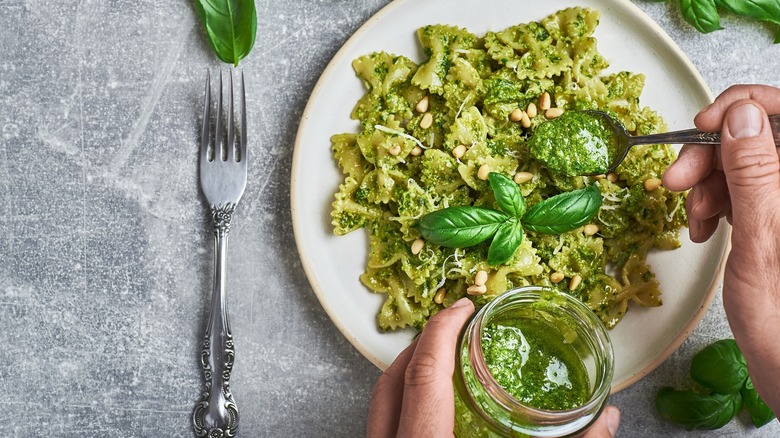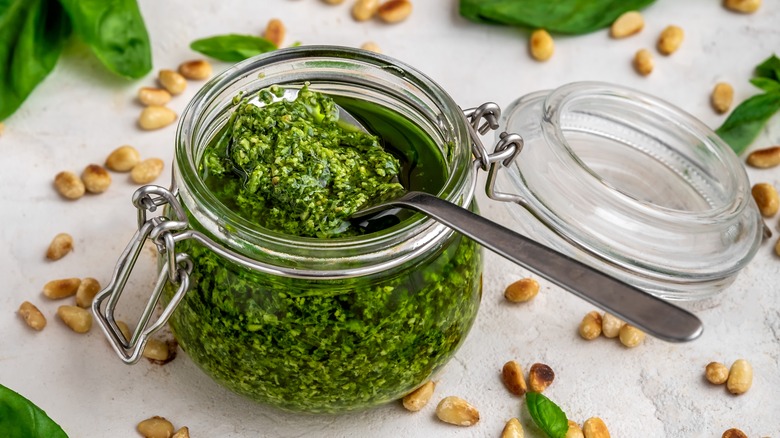How Long Pesto Will Still Taste Good After Opening
If any sauce deserves special praise, it's pesto. From penne pasta to a gourmet Caprese panini, the bright green condiment's appearance and rich, herby flavor complements all sorts of foods — especially those that hail from Italy, the sauce's country of origin. But like so many great things, it doesn't last forever. If you've ever wondered just how long pesto stays fresh and tasty after you open it, it's time to settle the issue once and for all.
According to the USDA's FoodKeeper app, jarred pesto stored in the fridge should be eaten within three days of opening for best freshness and quality. However, some home cooks online claim that opened store-bought pesto can last in the fridge for up to two weeks depending on the brand (the "fresh" refrigerated kind tends to spoil faster), while homemade pesto might only hold up for a week. The inconsistency comes down to the matter of shelf life compared to expiration dates.
To the confusion of many consumers, "use-by" and "best-by" dates on store-bought foods refer to when the product will no longer taste fresh, rather than when it's unsafe to eat. In the case of pesto, the sauce could be past its prime long before it expires. Fortunately, there's an easy way to tell when pesto is best left off your pasta. If it has gone from bright green to dull brown, not only is the sauce less visually appealing, but it has also probably developed an unappetizing and even funky flavor.
Why pesto's flavor fades and how to best store it
While some condiments don't ever really expire because they include shelf-stable or fermented ingredients, pesto isn't one of them. Unfortunately, the sauce's standard recipe — basil, garlic, cheese, salt, olive oil, and pine nuts — features a few things that aren't immune to the ravages of time. Pesto only remains fresh as long as its most perishable ingredient: basil.
Anyone who's grown the fragrant herb is aware of how fickle basil can be, whether planted in a garden box or placed on the kitchen windowsill. Similar to mint, its familial relative and a subtly sweet substitute if you feel like pesto for both dinner and dessert, basil requires lots of sun and moist soil to keep its leaves bright and crisp. However, once picked and processed, it starts to lose its color. When the plant's cells are damaged and exposed to oxygen, an enzyme in basil causes it to brown. This chemical reaction not only leads to a faded sauce, but a less flavorful and potentially odd-tasting one.
While you should always keep opened pesto in an airtight container in the fridge for food safety, it is possible to prevent pesto from browning as quickly with a simple storage trick. To preserve its vibrant flavor and appearance, pour a thin layer of olive oil on top of the condiment. This creates a barrier between the pesto and the air, helping it stay bright and delicious for longer.

